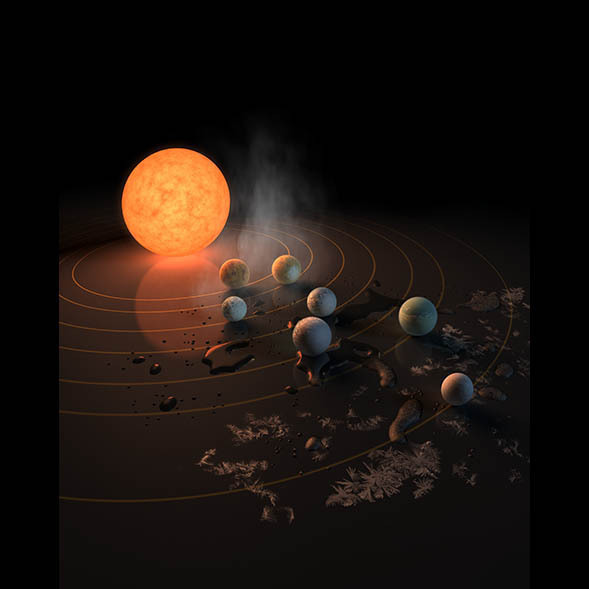The recent discovery of a cluster of planets similar in size to Earth, orbiting a small sun light years away from our own, has reinvigorated the discussion of whether we are alone in the universe.
But is that the question we should be asking? For those of a theological bent, the answer has always been that we are not alone: God is with us. For some, then, the question becomes: what if God is not with us alone?
The prospect of other, intelligent life in another, unknown region of creation is clearly fascinating to scientists and theologians alike. Emily McFarlan Miller, of the Religion News Service, quotes an Episcopal priest who bridges both worlds.
“I have always seen the search for life elsewhere to be an opportunity to understand basically the way we relate to the universe — sort of our location,” said the Rev. Lucas Mix, an Episcopal priest and astrobiologist who has a doctorate in evolutionary biology.
“My greatest hope would be that we find life somewhere else because when we find life somewhere else, we can start to talk about what it means to be alive and not what it means to be us.”
Throughout the history of theology, Mix said, Christians have swung between the idea that Earth can be the only inhabited planet because God favors humans, and its counterpart, that to assume Earth is the only inhabited planet is the height of human pride because God is limitless and all-powerful.
Read more at RNS. What would it mean for your faith if we were to find out that we are not the only “people” in creation?
___________________
Featured illustration: “This artist’s concept appeared on the February 23rd, 2017 cover of the journal Nature announcing that the TRAPPIST-1 star, an ultra-cool dwarf, has seven Earth-size planets orbiting it. Any of these planets could have liquid water on them. Planets that are farther from the star are more likely to have significant amounts of ice, especially on the side that faces away from the star.
The system has been revealed through observations from NASA’s Spitzer Space Telescope and the ground-based TRAPPIST (TRAnsiting Planets and PlanetesImals Small Telescope) telescope, as well as other ground-based observatories. The system was named for the TRAPPIST telescope.
NASA’s Jet Propulsion Laboratory, Pasadena, California, manages the Spitzer Space Telescope mission for NASA’s Science Mission Directorate, Washington. Science operations are conducted at the Spitzer Science Center at Caltech in Pasadena. Spacecraft operations are based at Lockheed Martin Space Systems Company, Littleton, Colorado. Data are archived at the Infrared Science Archive housed at Caltech/IPAC. Caltech manages JPL for NASA.”

